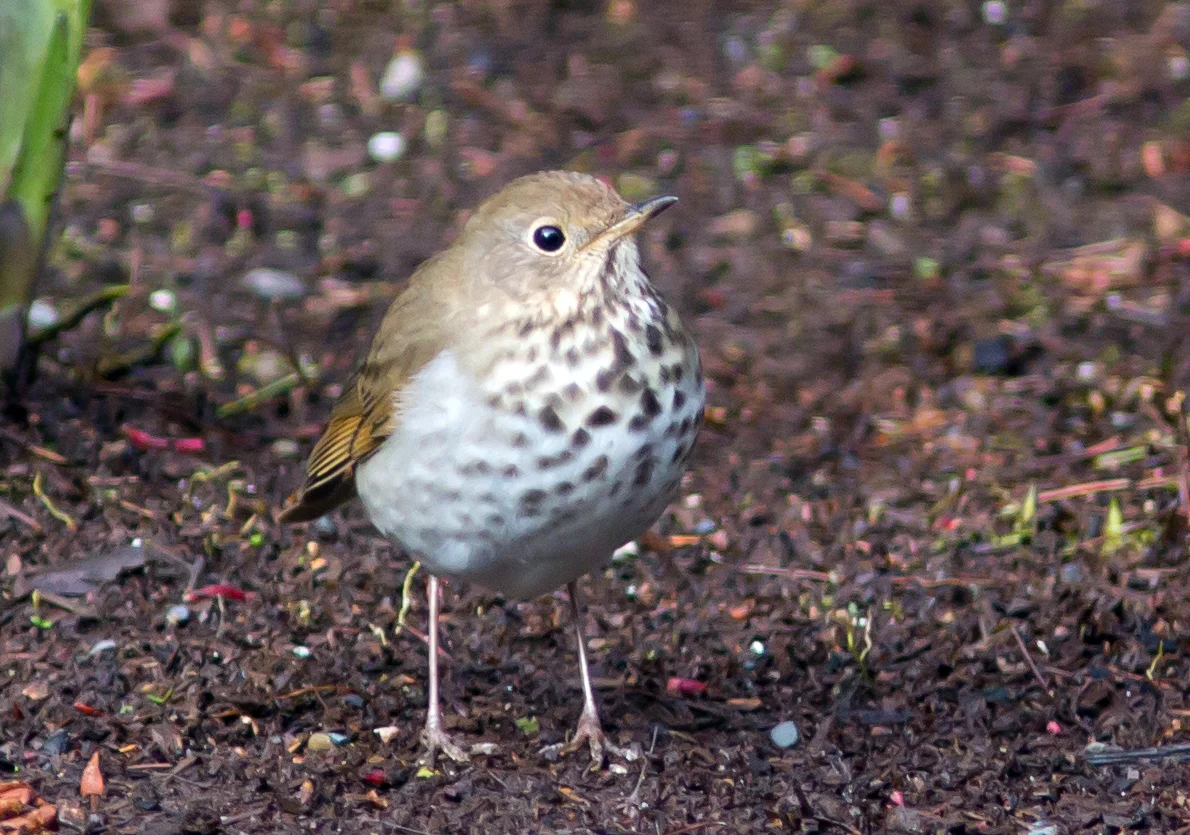Bird of the Month: Hermit Thrush
By Andy McCormick
PC: Mick Thompson (Hermit Thrush)
Scientific Name: Catharus guttatus
Length 6.75 in
Wingspan 11.5 in
Weight 1.1 oz (31 g)
AOU Band code HETH
A quiet bird of the forest floor much of the time, the Hermit Thrush has a song like heaven. “I pause reverently as the hush and stillness of the twilight come upon the woods… And as the hermit’s evening hymn goes up from the deep solitude below me, I experience that serene exaltation of sentiment of which music, literature, and religion are but faint types and symbols” (Burroughs). Its song is an ethereal rising and falling melody which each bird varies as it sings. You can hear the song of the Hermit Thrush recorded in Oregon at the Macauley Library.
The Hermit Thrush sings from the lower levels of the forest. It flits on lower branches and forages in dry areas of the forest floor using some techniques used by other birds. While foraging for insects it will use quick wing flashes as some warblers do and at other times will vibrate one foot in a way similar to a plover. It flicks its tail raising it quickly while simultaneously making a chuck sound, then slowly lowering it (Dellinger, et al). “The bird signs its name with its tail” (Dunne). Watch a video of a Hermit Thrush hopping with tail flicks here.
The rufous color is another way in which the tail sets the Hermit apart from other Catharus thrushes. The Pacific coastal subspecies tends to be browner-backed with a brighter rufous tail when compared to the montane subspecies of the Cascades which is grayer-backed with a less contrasting tail. The eye almost always has a ring even if it is narrow. The Hermit Thrush shares the genus Catharus, Greek for spotless or clean, with six other thrushes including two other Washington species: the Veery and Swainson’s Thrush. Its species name guttatus is from the Latin for drops or spotted, or speckled as from raindrops, in reference to its breast.
The Hermit Thrush arrives in the breeding area in late March and April about six weeks before Swainson’s Thrush appears (Dellinger, et al). The males arrive first and defend their territory by singing. A rather bulky open cup nest is built by the female usually in a conifer about 3-12 feet above the ground (Kaufman). Three to four pale greenish blue eggs are deposited and the female incubates the eggs for about two weeks. Both parents feed the hatchlings and the young leave the nest after about 12 days. Often a second brood will be attempted.
The Hermit Thrush is the only North American forest thrush species to show a stable and increasing population. It has increased by 75% over the past 40 years (Dellinger, et al). Its range extends throughout North America except in the most northern part of Canada. There is some debate about the reasons for this success. Some studies indicate that it does poorly after clear cut and forest thinning harvests, but others show the species will return after some second growth develops. It also seems to be a bird of the edges and forest edges have increased as more deep forest becomes fragmented. We’re glad for its success because now we can hear its song more often.


